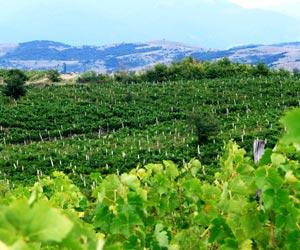Source: https://www.wine-searcher.com/regions-bulgaria
Bulgaria, although far from the most famous or prestigious of the world’s wine producing nations, certainly ranks among the most prolific. The Eastern European country has a long history of viticulture, and its wine has more about it than implied by the sea of cheap red (mostly varietal Cabernet Sauvignon) that flowed westwards during the 1980s.
The nation is now home to a growing number of promising wine pioneers, but perhaps the most distinguished era of Bulgarian viticulture so far dates back to the mid 14th century, just before the once-powerful Bulgarian Empire began to fragment and ceded power to the Ottomans. Bulgarian art more than 1000 years old depicts wine as part of Bulgarian culture, particularly among the ruling classes.

One notable painting from 811 AD shows Bulgarian monarch Khan Krum drinking wine from the skull of Byzantine Emperor Nicephorus I, his opponent at the battle of Pliska. Today the Khan Krum winery in the Black Sea region bears his name.
Bulgaria is gradually finding its identity as a modern wine-producing nation, discovering new terroirs, grape varieties and styles. It is yet to establish a particular ‘Bulgarian’ wine style, opting instead for reliable, marketable names such as Cabernet Sauvignon, Merlot, Chardonnay, Riesling and Muscat. These French varieties were brought to Bulgaria in the 1960s at the height of communist rule, their productivity earning them a place in many Bulgarian vineyards. They rapidly replaced such traditional varieties as Kadarka (Gamza), Mavrud and Melnik.
Only two subregions have been officially recognized by the EU at the PGI level – broadly equivalent to a French IGP or Italian IGT. These are:
– The Danubian Plains including the northern part of the Black Sea region
– Thracian Lowlands including the Struma Valley and the southern part of the Black Sea region
In addition there are 52 designations at the PDO (AOP/DO/DOC) level. Like the PDIs these were formalized for Bulgaria’s entry into the European Union in 2007. However only a fraction of these are used in any scale. Other more traditional geographic designations are still used by both producers and regulatory organizations.
The Black Sea regions are another mainstay of Bulgarian viticulture, although the Rose Valley and Struma Valley also generate a respectable quantity of wine each vintage. The only area not to have vineyards planted in any significant quantity is that around the capital Sofia, in the west.
Unlike that of most longer established wine nations (Germany, Italy and France, for example), much Bulgarian wine is produced from grapes grown in a variety of regions around the country. While traditional wineries in Burgundy, Piedmont or Pfalz source their grapes locally, their eastern cousins in Bulgaria ship grapes for many miles before making them into wine.
Although this has led to complications in quality control, advances in harvesting machinery and refrigeration have made this a viable alternative to using locally sourced grapes. Larger wine companies are now using this method more and more, and in New World countries such as Chile and New Zealand it is not uncommon for grapes or must to be trucked for hundreds of miles from vineyard to winery.
The major markets for Bulgarian wine are the western European countries (Britain, the Netherlands and Germany, for example) and Russia, although since the fall of communism the latter market has begun to dry up.


